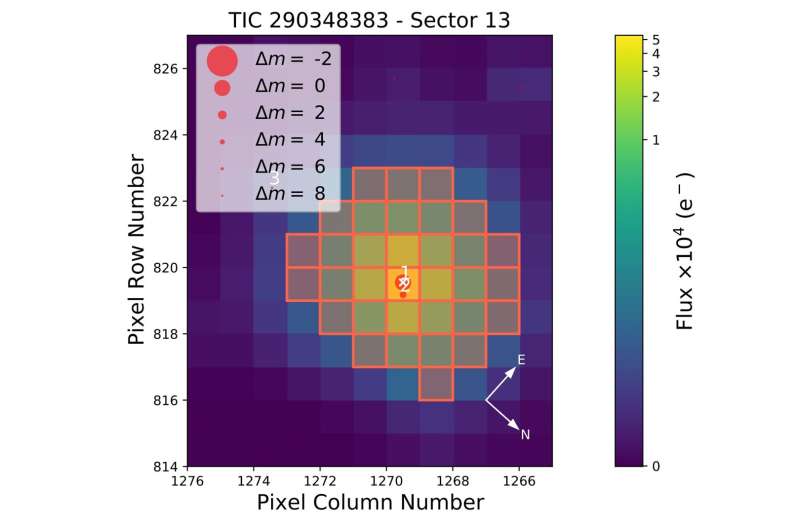March 14, 2023 report
This article has been reviewed according to Science X's editorial process and policies. Editors have highlighted the following attributes while ensuring the content's credibility:
fact-checked
peer-reviewed publication
trusted source
proofread
Transiting mini-Neptune exoplanet characterized as having either gaseous atmosphere, an ocean or both

An international team of planetary scientists has characterized some of the features of an exoplanet named HD-207496-b, located approximately 138 light years from Earth. In their paper accepted for publication in the journal Astronomy & Astrophysics, and currently posted on the arXiv preprint server, the group describes their study of the exoplanet and the two theories regarding its likely makeup.
The exoplanet HD-207496-b was discovered as part of a larger effort to characterize naked core planets. As such, the team was analyzing HARPS spectroscopic observations of HD-207496—a bright k dwarf. By adding TESS photometry data, the group was able to measure the stars' brightness and wavelength, and by studying the exoplanet's transit characteristics, the team was able to calculate its period, mass, radius and density. That led them to a bit of a conundrum—was the exoplanet gaseous or watery?
The researchers calculated that the exoplanet had a radius 2.25 times that of Earth, with an orbit of 6.44 days. And it had a mass that was approximately 6.1 times Earth's. Simple math showed that the exoplanet had a density of 3.27 grams per cubic centimeter, which is less than that of Earth.
This, the research team deduced, suggests that the planet has a rocky core covered by mostly water or gas. Intrigued by the possibilities, the group created a model to help them better estimate the makeup of the exoplanet. But the model was not able to nail down its specific properties—it suggested that it could be an exoplanet that was water-rich, or gas-rich, or some mix of both.
The research team also discovered that evaporation modeling showed that if the exoplanet has an atmosphere rich in helium and hydrogen, then its current state is likely temporary. Gravity from its star will likely pull the atmosphere from the exoplanet within the next half-billion years. They also note the possibility that such gases have already evaporated, which would leave the exoplanet with nothing but an ocean.
The team suggests that HD-207496-b likely has a mix of gas and water and also notes that future study of the planet is likely to lead to a better understanding of its makeup.
More information: S. C. C. Barros et al, The young mini-Neptune HD 207496b that is either a naked core or on the verge of becoming one, arXiv (2023). DOI: 10.48550/arxiv.2303.03775
Journal information: arXiv , Astronomy & Astrophysics
© 2023 Science X Network

















